Plants & Flowers
Schefflera Arboricola Trinette: A Symphony of Colors and Shapes in Botanical Elegance
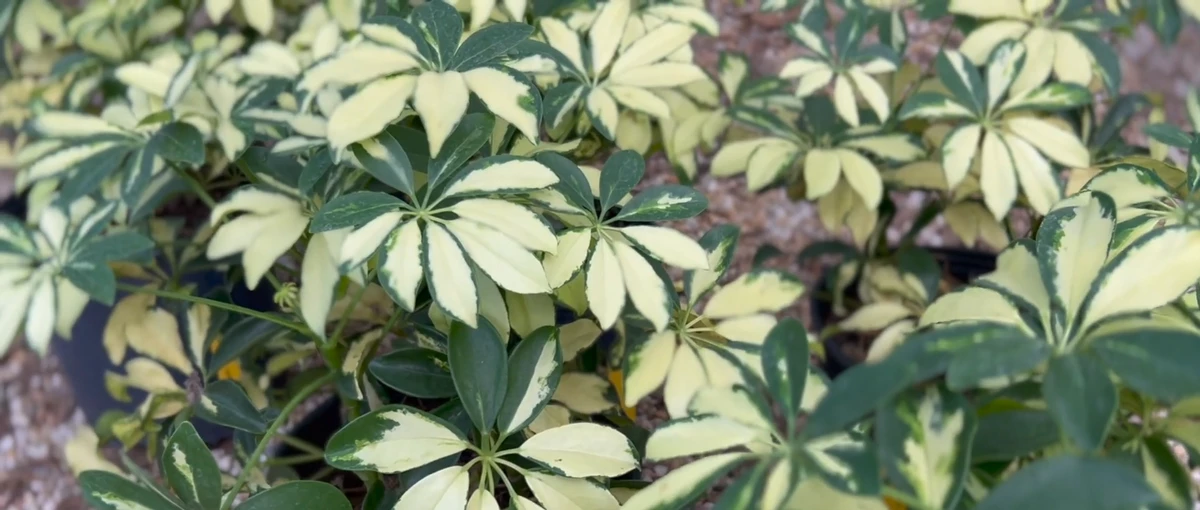
Schefflera Arboricola Trinette Overview:
Introduction to Schefflera Arboricola Trinette: Schefflera Arboricola Trinette is a captivating cultivar within the Schefflera genus, prized for its unique aesthetic and adaptability. This delightful plant, commonly known as the Trinette Dwarf Umbrella Tree, has found its way into homes and gardens, bringing a touch of nature’s elegance. In this overview, we delve into the distinctive characteristics, appearance, and origin of this popular ornamental shrub.
Characteristics and Appearance: The Trinette variety is celebrated for its striking foliage. The glossy leaves are palmately compound, arranged in an umbrella-like fashion, hence the name “Umbrella Tree.” What sets Trinette apart is its variegation – a harmonious blend of green and creamy yellow tones. The leaves, radiating symmetrically from a central point, create a visually appealing canopy. This cultivar’s compact size makes it suitable for various settings, whether gracing living spaces indoors or adding charm to outdoor landscapes.
Origin and Growth Habits: Schefflera Arboricola, the broader species to which Trinette belongs, is native to Taiwan and Hainan. Trinette inherits its growth resilience from its origins. Thriving in well-draining soil with a slightly acidic to neutral pH, it exhibits adaptability to different light conditions, ranging from partial shade to bright, indirect sunlight. This versatility extends its cultivation possibilities, making it a popular choice for plant enthusiasts globally. Whether nurtured as an indoor potted companion or integrated into outdoor greenery, Trinette showcases robust growth habits, emphasizing its adaptability to diverse environments.
This overview offers a glimpse into the allure of Schefflera Arboricola Trinette, emphasizing its visual appeal and adaptability. As we explore further, we will uncover insights into its care regimen, landscaping potential, and the nuanced ways it enhances both interior and exterior spaces.
Caring for Schefflera Arboricola Trinette:
Sunlight and Watering Requirements: Understanding the needs of Schefflera Arboricola Trinette regarding sunlight and watering is crucial for ensuring its well-being. Trinette, with its variegated foliage, thrives in environments with bright, indirect sunlight. Placing the plant near windows with east or west exposure is ideal. However, it’s essential to strike a balance, as prolonged exposure to direct sunlight can lead to leaf burn. Adjusting the plant’s position to avoid intense sunlight during the hottest parts of the day is recommended.
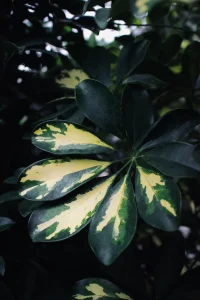
Trinette Dwarf Umbrella Tree
When it comes to watering, Trinette prefers a moderately moist soil. Allow the top inch of the soil to dry out before watering, preventing waterlogged conditions that could result in root issues. Factors such as humidity and temperature influence the frequency of watering. During the active growing season, typically spring and summer, more frequent watering may be necessary. Contrastingly, in the dormant season, it’s crucial to reduce watering to prevent overhydration.
Soil Preferences: Choosing the right soil is vital for the health of Schefflera Arboricola Trinette. Opt for a well-draining potting mix to prevent water from accumulating around the roots. A blend of peat, perlite, and pine bark provides an ideal balance. Incorporating organic matter into the soil enhances fertility and moisture retention. Regular repotting every 2-3 years, or when the plant outgrows its container, ensures the soil remains fresh and nutrient-rich.
Temperature Tolerance: Schefflera Arboricola Trinette exhibits adaptability to various temperatures, favoring warm and humid conditions. Ideally suited for USDA hardiness zones 10-11, Trinette thrives in temperatures ranging from 65°F to 80°F (18°C to 27°C). While it can tolerate occasional temperature fluctuations, safeguarding the plant from frost is crucial, as extended exposure to cold conditions can lead to leaf damage. Maintaining a consistent indoor temperature contributes to the overall well-being of Trinette.
In summary, creating an environment that mimics Trinette’s natural habitat, considering factors such as sunlight exposure, watering practices, soil composition, and temperature, is key to nurturing a healthy and vibrant Schefflera Arboricola Trinette. Tailoring care to these specific needs ensures the plant’s longevity and enhances its ornamental value in any setting.
Common Issues and Troubleshooting:
Pests and Diseases: Dealing with pests and diseases is crucial for maintaining the health of Schefflera Arboricola Trinette. Here’s a comprehensive guide to addressing common issues:
1. Spider Mites: These tiny pests can cause stippling and webbing. Combat them by regularly misting the plant, enhancing humidity, and using insecticidal soap.
2. Aphids: Aphids may cluster on young shoots, causing distortion. Introduce natural predators like ladybugs or use neem oil to deter aphids.
3. Scale Insects: Identified by small, waxy bumps, scale insects can be removed manually or treated with insecticidal soap.
4. Root Rot: Excessive moisture can lead to root rot. Ensure proper drainage and allow the soil to dry out between waterings. Repot if necessary.
5. Leaf Spot: Fungal infections can cause leaf spots. Improve air circulation, avoid overhead watering, and treat with a fungicide if needed.
Yellowing Leaves and Solutions: Yellowing leaves can be indicative of various issues. Here’s how to troubleshoot and address the problem:
1. Overwatering: If the soil is consistently wet, reduce watering and allow the soil to dry out. Ensure proper drainage to prevent waterlogged conditions.
2. Underwatering: If the soil is dry, increase watering frequency. Consider the plant’s size and environmental conditions when adjusting your watering routine.
3. Nutrient Deficiency: Yellowing can result from nutrient deficiencies. Apply a balanced, water-soluble fertilizer to address this issue.
4. Poor Light Conditions: Inadequate light can lead to yellowing. Adjust the plant’s placement to receive more indirect sunlight, avoiding direct exposure.
Drooping or Wilting: Causes and Remedies: Drooping or wilting can be distressing, but understanding the causes and remedies is essential:
1. Watering Issues: Both overwatering and underwatering can cause drooping. Adjust your watering routine based on the plant’s specific needs.
2. Root Problems: Check for root rot or other root issues. Trim affected roots and repot in fresh, well-draining soil.
3. Environmental Stress: Sudden changes in temperature or humidity can lead to wilting. Gradually acclimate the plant to new conditions.
4. Pest Infestation: Some pests, such as root-feeding nematodes, can cause wilting. Treat the plant with appropriate pesticides if pests are identified.
5. Disease: Fungal or bacterial infections can result in wilting. Treat with fungicides or antibacterial solutions as recommended.
By promptly identifying and addressing these common issues, you can ensure the continued vitality and beauty of Schefflera Arboricola Trinette. Regular monitoring and preventive measures are key to a thriving and resilient plant.
Indoor vs. Outdoor Cultivation:
Suitable Environments for Indoor Growth: Schefflera Arboricola Trinette, with its compact size and vibrant foliage, is well-suited for indoor cultivation, adding a touch of nature to your living spaces. Here’s a detailed exploration of the key factors for successful indoor growth:
1. Light Requirements: Place your Schefflera Arboricola Trinette near bright, indirect sunlight. East or west-facing windows are ideal. If natural light is insufficient, consider supplementing with fluorescent lights to maintain optimal growth.
2. Temperature Considerations: Schefflera Arboricola Trinette thrives in average room temperatures ranging from 65°F to 80°F (18°C to 27°C). Avoid exposing the plant to drafts or sudden temperature fluctuations.
3. Humidity Levels: While Schefflera Arboricola Trinette can adapt to normal indoor humidity, it benefits from occasional misting to increase humidity levels. Grouping plants together can create a microclimate with higher humidity.
4. Container and Soil: Choose a well-draining potting mix and a container with drainage holes to prevent waterlogged conditions. Repot every 2-3 years to refresh the soil and provide necessary nutrients.
5. Pruning for Space: Regular pruning helps control the size and shape of Schefflera Arboricola Trinette , making it suitable for limited indoor spaces. Additionally, it encourages bushier growth, enhancing its aesthetic appeal.
Considerations for Planting Outdoors: While Schefflera Arboricola Trinette is well-suited for indoor environments, it can also thrive outdoors in the right conditions. Here are important considerations for successful outdoor cultivation:
1. Climate Compatibility: Schefflera Arboricola Trinette is best suited for USDA hardiness zones 10-11, where temperatures remain above freezing. In colder climates, consider planting in containers that can be moved indoors during winter.
2. Light Requirements: Choose a location with filtered sunlight or partial shade. Trinette can tolerate some direct sunlight, but prolonged exposure to intense sunlight may lead to leaf burn, especially for variegated varieties.
3. Soil and Drainage: Plant Schefflera Arboricola Trinette in well-draining soil with added organic matter. Good drainage is crucial to prevent waterlogged conditions, which can lead to root rot.
4. Spacing and Air Circulation: Allow adequate spacing between plants to ensure proper air circulation. This helps prevent issues like fungal infections and promotes overall plant health.
5. Protection from Frost: Schefflera Arboricola Trinette is sensitive to frost. In regions with occasional frost, cover the plant or bring it indoors during cold spells to prevent damage to the leaves.
By considering these factors, you can create an optimal environment for Schefflera Arboricola Trinette, whether you choose to cultivate it indoors or outdoors. Each setting offers unique advantages, allowing you to enjoy the beauty of this versatile plant in various spaces.
Schefflera Arboricola Trinette Pruning and Shaping Techniques:
Tips for Proper Pruning: Pruning is an essential aspect of Schefflera Arboricola Trinette care, contributing to its overall health and aesthetic appeal. Here are some tips for proper pruning:
1. Timing is Key: Prune Trinette during the active growing season, typically in spring or early summer. This allows the plant to recover quickly and promotes new growth.
2. Remove Dead or Yellowing Leaves: Regularly inspect the plant for dead or yellowing leaves and prune them at their base. This not only improves the plant’s appearance but also enhances air circulation.
3. Shape and Control Size: Pruning can be used to control the size and shape of Schefflera Arboricola Trinette. Trim back long stems and control the overall height and width according to your preferences.
4. Use Clean, Sharp Tools: To prevent damage and ensure a clean cut, use sharp and sanitized pruning shears. This reduces the risk of disease transmission and promotes faster healing.
5. Encourage Bushier Growth: To encourage a bushier growth habit, pinch or prune the tips of young shoots. This promotes branching and results in a fuller, more compact plant of Schefflera Arboricola Trinette.
6. Focus on Problem Areas: Pay attention to areas where the plant may be becoming leggy or uneven. Targeting these specific areas during pruning helps maintain a balanced and aesthetically pleasing shape.
Shaping the Schefflera Arboricola Trinette for Aesthetic Appeal: Shaping Schefflera Arboricola Trinette is an art that adds to its visual charm. Follow these guidelines for achieving aesthetic appeal through shaping:
1. Maintain Symmetry: Aim for a symmetrical shape by evenly distributing branches and foliage. This enhances the natural beauty of Schefflera Arboricola Trinette and ensures a well-balanced appearance.
2. Create a Canopy: Shape the plant to create a pleasing canopy effect, resembling an umbrella. This is a characteristic feature of Schefflera Arboricola Trinette and contributes to its unique charm.
3. Consider the Plant’s Natural Form: Work with the plant’s natural form and growth pattern. Enhance its inherent beauty rather than forcing it into an unnatural shape.
4. Step Back and Assess: Regularly step back and assess the plant from different angles. This allows you to identify any irregularities or areas that may need attention.
5. Prune with Purpose: Each pruning cut should have a purpose, whether it’s to remove dead growth, control size, or shape the plant. Avoid excessive pruning, as it may stress the plant.
By following these tips for proper pruning and shaping, you can maintain the health and aesthetics of Schefflera Arboricola Trinette. Remember that patience is key, and gradual shaping over time often yields the best results.
Plants & Flowers
Dracaena Hawaiian Sunshine: A Complete Guide for Plant Enthusiasts

Bring a touch of the tropics indoors with the stunning Dracaena Hawaiian Sunshine! This easy-to-care-for houseplant boasts vibrant variegated foliage and air-purifying properties, making it a perfect choice for beginner plant owners and seasoned enthusiasts alike. This comprehensive guide will equip you with everything you need to know about the Dracaena Hawaiian Sunshine, from its origins and benefits to its care requirements.
What is the Dracaena Hawaiian Sunshine?
The Dracaena Hawaiian Sunshine is a captivating sub-variety of the popular Dracaena deremensis, also known as the Green Dracaena. It originated as a spontaneous mutation of the Dracaena Lisa cultivar, and its unique characteristics have made it a favorite among houseplant enthusiasts.
This stunning plant is known for its glossy, green leaves with a central lime green stripe that runs down the center, adding a vibrant pop of color to any indoor space. The Dracaena Hawaiian Sunshine features an upright, cane-like growth pattern with a crown of sword-shaped leaves. Under ideal conditions indoors, it can reach heights of 6-8 feet, making a bold statement in your home.
Benefits of Owning a Dracaena Hawaiian Sunshine
Beyond its undeniable beauty, the Dracaena Fragrans Hawaiian Sunshine offers a multitude of benefits for your home and well-being:
- Air Purification: According to NASA’s Clean Air Plant Study, the Dracaena Hawaiian Cane effectively removes common toxins like formaldehyde, benzene, and trichloroethylene from indoor air, contributing to a healthier living environment.
- Low-Maintenance: This forgiving plant is perfect for busy plant owners. It tolerates a variety of light conditions and watering schedules, making it an ideal choice for those new to houseplants.
- Aesthetic Appeal: A splash of the tropics! The Dracaena Hawaiian plant’s vibrant foliage adds a touch of elegance and sophistication to any room. Its unique form and striking colors will surely turn heads and become a conversation starter among your guests.
- Improved Well-being: Studies suggest that houseplants can play a significant role in reducing stress and improving mood. Surrounding yourself with greenery can create a more calming and inviting atmosphere in your home.
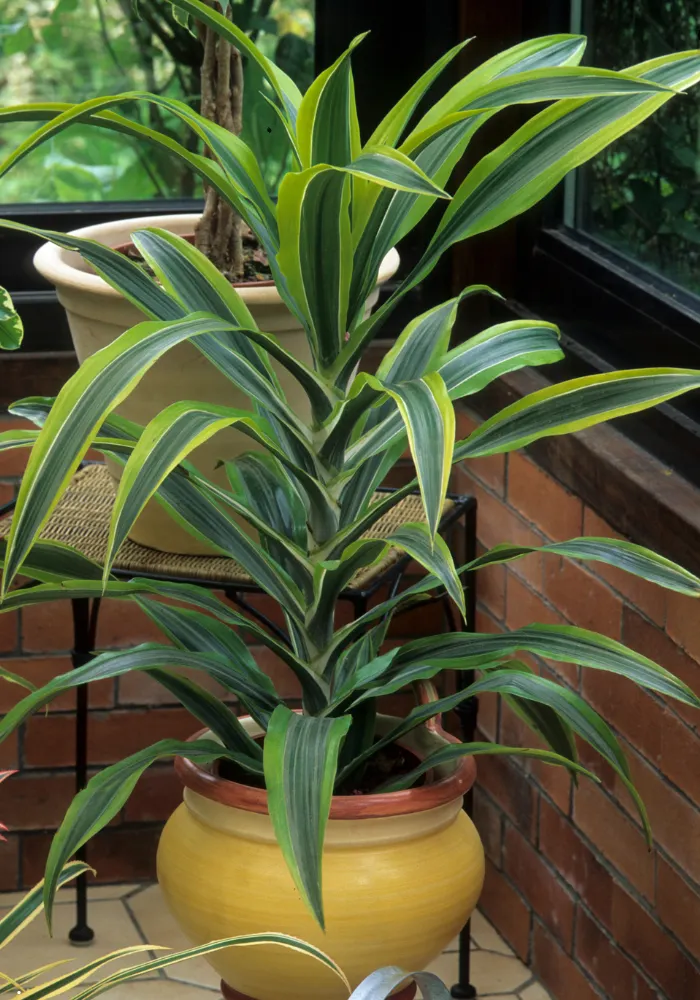
Dracaena Hawaiian Sunshine
Dracaena Hawaiian Sunshine Care Guide
Keeping your Dracaena Hawaiian plant thriving is easy with proper care. Here’s a detailed guide to ensure your plant flourishes for years to come:
- Light Requirements: This plant prefers bright, indirect sunlight. While it can tolerate lower light conditions, growth may be slower. Avoid placing your Dracaena Fragrans Hawaiian Sunshine in direct sunlight, as this can scorch the leaves. East or north-facing windows are ideal locations.
- Watering Needs: The key to watering your Dracaena Hawaiian Cane is to avoid extremes. Allow the top inch of soil to dry out completely before watering thoroughly. Overwatering is a common culprit for root rot, so it’s always better to err on the side of underwatering. Reduce watering frequency during the winter months when the plant is less actively growing.
- Soil and Potting: Use a well-draining potting mix specifically formulated for houseplants. A good quality mix will allow for proper aeration and drainage, preventing root rot. Choose a pot with drainage holes to ensure excess water can escape. Consider repotting your Dracaena Hawaiian Sunshine every 1-2 years into a slightly larger pot with fresh potting mix as it matures.
- Temperature and Humidity: The Dracaena Fragrans Hawaiian Sunshine thrives in average room temperatures between 60-85°F. It’s adaptable to moderate humidity levels but can tolerate drier air. If your home tends to have dry air, occasional misting or using a pebble tray filled with water can help increase humidity around your plant.
- Fertilizing: During the growing season (spring and summer), apply a balanced liquid fertilizer diluted according to the package instructions. Fertilize once a month to provide your plant with the nutrients it needs for optimal growth. Withhold fertilizer during the fall and winter months when growth slows.
- Pruning and Maintenance: Regular pruning can help maintain your Dracaena Fragrans Hawaiian Sunshine’s desired shape and encourage bushier growth. You can prune leggy stems or remove brown or yellowing leaves with sharp, clean shears. Wipe the leaves occasionally with a damp cloth to remove dust and improve light absorption for better photosynthesis.
Potential Problems and Solutions
While the Dracaena Hawaiian Cane is a relatively low-maintenance plant, a few common issues can arise:
- Brown Leaves: Brown leaves can be caused by underwatering, overwatering, or excessive sunlight. Adjust your watering habits based on the soil moisture and move the plant to a location with suitable indirect light. Here’s a breakdown to help you diagnose the cause:
- Underwatering: If the brown leaves appear dry and crispy, particularly at the edges and tips, underwatering is likely the culprit. Increase watering frequency, but be sure to allow the top inch of soil to dry out between waterings to avoid overwatering.
- Overwatering: Brown leaves that feel mushy or soft to the touch could indicate root rot caused by overwatering. Examine the roots. If they are brown or mushy, you may need to repot your plant in fresh, well-draining soil and adjust your watering habits.
- Excessive Sunlight: If the brown leaves appear primarily on the side of the plant facing the sun, it’s likely getting too much direct sunlight. Move your Dracaena Fragrans Hawaiian Sunshine to a location with brighter indirect light.
- Yellowing Leaves: Yellowing leaves are a natural part of the aging process and can be removed. However, excessive watering or lack of light can also contribute to yellowing leaves. Consider repotting if the plant is rootbound or adjust watering/light conditions based on the following:
- Overwatering: If the yellowing leaves are accompanied by mushy soil, reduce watering frequency and allow the soil to dry out more between waterings.
- Lack of Light: If the yellowing leaves are located on the lower portion of the plant, it may not be receiving enough light. Move your Dracaena Hawaiian to a brighter location with indirect sunlight.
- Pests and Diseases: Regularly inspect your Dracaena Hawaiian plant for signs of pests like mealybugs or spider mites, which can cause damage to the leaves. You can treat these pests with insecticidal soap or neem oil solution following the product instructions. Fungal diseases can also occur in poorly ventilated or overwatered conditions. Isolate the plant and treat it with a fungicide if necessary.

Dracaena Hawaiian Sunshine leaf
FAQ
How big do the leaves on a Dracaena Hawaiian Sunshine get?
The leaves of a Dracaena Fragrans Hawaiian Sunshine can grow anywhere from 1 to 2 inches wide and 6 to 12 inches long. The dimension can differ depending on the overall health and age of the plant. With proper care, your Hawaiian Sunshine can develop a full and lush crown of vibrant foliage.
Why is my Dracaena Hawaiian Sunshine drooping?
A droopy Dracaena Hawaiian Sunshine is often a sign of underwatering. These plants prefer consistently moist soil, but not soggy. Put your finger into the top of soil – if it feels dry, it’s time to water.
Overwatering can also cause drooping, though less likely. Drooping leaves accompanied by mushy stems or a foul odor indicate root rot. If this happens, act quickly! Repot your plant in fresh, well-draining soil and adjust your watering habits.
Is Dracaena Hawaiian Sunshine poisonous to cats?
Unfortunately, yes. The Dracaena Hawaiian Sunshine, like many Dracaena varieties, contains saponins, which can be irritating and even toxic to cats and dogs if ingested. Symptoms include vomiting, diarrhea, and drooling. If you have curious pets, it’s best to place your Hawaiian Sunshine in a location they can’t reach.
Does Dracaena Hawaiian Sunshine make a good office plant?
Absolutely! The Dracaena Fragrans Hawaiian Sunshine thrives in moderate to bright indirect light, making it perfect for most office environments with fluorescent lighting. It also tolerates a broad spectrum of temperatures, so you won’t have to worry about constant adjustments. Plus, its air-purifying properties can help improve indoor air quality, boosting focus and well-being for you and your colleagues.
How fast does a Dracaena Hawaiian Sunshine grow?
The Dracaena Hawaiian Sunshine is a slow to moderate grower, typically putting on a few inches per year. This makes it a great choice for those who don’t want a plant that will quickly outgrow its space.
How do you prune a Dracaena Hawaiian Sunshine?
Pruning is a wonderful way to boost bushier maintain and growth the liked formation of your Dracaena Hawaiian plant. You can use sharp, sterilized pruning shears to remove leggy stems, brown leaves, or branches that are growing out of proportion. Pruning also encourages new growth at the cut points.
Conclusion
The Dracaena Hawaiian Sunshine is a truly captivating houseplant that offers a multitude of benefits. Its vibrant foliage adds a touch of the tropics to any indoor space, while its air-purifying properties and low-maintenance needs make it a perfect choice for plant enthusiasts of all experience levels. With proper care, your Dracaena Fragrans Hawaiian Sunshine will thrive for years to come, bringing beauty and a touch of nature into your home.
We hope this comprehensive guide has equipped you with the knowledge and confidence to care for your Dracaena Hawaiian. Do you have a Dracaena Fragrans Hawaiian Sunshine in your collection? Share your experiences and tips in the comments below! We’d also love to hear your questions. Let’s chat about all things Dracaena Hawaiian Sunshine!
Plants & Flowers
Barleria Cristata: All You Need to Know About the Philippine Violet

Convey a touch of the strange to your garden with the stunning Barleria Cristata, also known as the Philippine Violet, Crested Philippine Violet, or Bluebell Barleria. This ornamental shrub, hailing from the Acanthaceae family and native to regions stretching from Southern China to India, boasts vibrant blooms that will add a burst of color to your landscape. Whether you’re a seasoned gardener or only beginning your botanical journey, this comprehensive guide will explore everything you need to know about incorporating the Barleria Cristata into your garden haven.
Unveiling the Beauty of Barleria Cristata
Barleria cristata description
Barleria Cristata typically flourishes as a shrub or subshrub, reaching a height of 3-4 feet and adding a touch of vertical interest to your garden beds. The foliage itself is a sight to behold, featuring a deep, glossy green color and a smooth, medium texture. Elliptical or ovate in shape, these lush leaves provide a perfect backdrop for the true star of the show – the flowers.
The trumpet-shaped blooms of Bluebell Barleria are a true conversation starter. Available in a range of captivating colors like rich purple, soothing lavender, or even stunning white with stripes, these vibrant blossoms typically grace the plant during the late summer and fall months, extending your garden’s colorful season.
Adaptability of Philippine Violet
The beauty of Bluebell Barleria extends beyond its visual appeal. This versatile plant thrives in various lighting conditions, tolerating full sun to part shade. When it comes to watering, Philippine Viole is a dream come true for forgetful gardeners. This drought-tolerant beauty prefers dry to medium moisture, making it ideal for regions with less frequent rainfall. Cold hardiness-wise, Barleria Cristata typically flourishes in USDA zones 9-11.
Bringing Barleria Cristata to Your Garden
Planting
To cultivate your own Barleria Cristata magic, select a bright area in your garden with well-drained ground. This ensures optimal growth and prevents root rot. Philippine Viole can be propagated through seeds or cuttings. Seeds offer a cost-effective option, but germination can be slower. Cuttings, on the other hand, establish quicker and guarantee the offspring will retain the exact characteristics of the parent plant. If planting multiple Philippine Viole, space them 2-3 feet apart to let for suitable blossoming and air circulation.
Care and Maintenance
One of the biggest advantages of Barleria Cristata is its low-maintenance nature. Occasional watering, especially during drier periods, is all it needs to thrive. For bushier growth and to maintain a desired shape, you can prune lightly after the flowering season. As with most plants, Barleria Cristata can be susceptible to occasional pest or disease issues. However, employing integrated pest management (IPM) techniques can effectively address these concerns without resorting to harsh chemicals. IPM involves fostering a healthy ecosystem in your garden that encourages beneficial predators to keep pest populations in check. This can include introducing ladybugs or lacewings, using natural pesticides like neem oil, and maintaining proper plant spacing and hygiene.
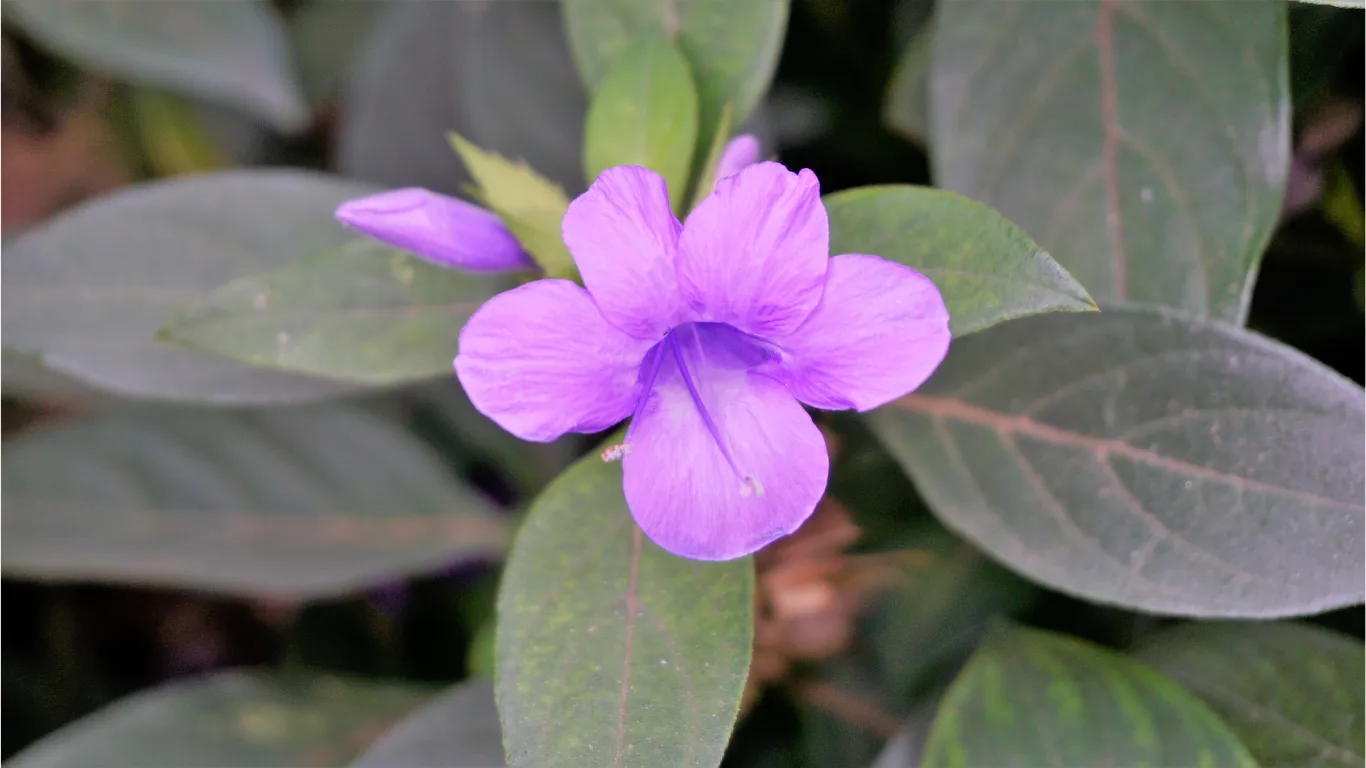
Barleria Cristata
Pests and Diseases
While generally disease-resistant, hold an eye out for typical garden pests like mealybugs or aphids. These can be handled with neem oil solutions or insecticidal soap.
Overwintering
In colder climates (USDA zones below 9), the Philippine Violet can be grown as an annual or brought indoors for the winter. If bringing it indoors, place it in a sunny location and water sparingly.
Wildlife Attraction
The Philippine Violet’s vibrant blooms attract butterflies and hummingbirds, creating a delightful buzz in your garden.
Growth Rate
The Philippine Violet boasts a moderate growth rate, typically reaching 3-4 feet in height and 2-3 feet in width within a few years.
Philippine Viole: A Versatile Garden Addition
Landscape Uses
The possibilities for incorporating Bluebell Barleria into your garden design are endless. Imagine a stunning flowering hedge or border bursting with passionate colors, adding a touch of whimsy and drama to your walkways. Alternatively, plant it as a specimen shrub to add a pop of color in a dedicated spot, creating a focal point that draws the eye and sparks conversation. Philippine Viole also adapts well to container gardening, bringing its charm to patios, balconies, or even poolside areas. For a truly container gardening showstopper, choose a pot that complements the plant’s vibrant colors and overall form.
Medicinal Uses
Traditionally, in some regions, the Barleria Cristata has been used in folk medicine as a tonic, diuretic, and blood purifier. However, it’s important to note that more scientific research is needed to confirm these medicinal uses. It’s always most reasonable to confer with a healthcare expert before utilizing any plant for medicinal intents.
Container Gardening Success
The Philippine Violet’s compact size and manageable growth habit make it a perfect candidate for container gardening. When planting in a pot, ensure it includes drainage hollows and utilize a acceptable quality potting compound. Put the container in a bright area and water regularly, letting the soil to dry little between waterings.
Companion Planting Ideas
To create a truly breathtaking display, consider companion planting your Barleria Cristata with other plants that complement its unique characteristics. Here are some suggestions:
- For contrasting heights: Pair Bluebell Barleria with lower-growing perennials like Russian Sage (Salvia yangii) or ornamental grasses like Maiden Grass (Miscanthus sinensis) for a visually interesting layered effect. The contrasting heights will add depth and dimension to your garden bed.
- For color harmony: Yellow lantana (Lantana camara) or blue plumbago (Ceratostigma plumbago) can create a stunning color combination alongside the purple or lavender blooms of Philippine Viole. Play with analogous colors (colors next to each other on the color wheel) for a harmonious and sophisticated look, or use contrasting colors for a bolder statement.
- For textural contrast: Foliage plants like Silver Dust Miller (Senecio cineraria) or variegated Plectranthus (Plectranthus argentatus) can count a hint of texture and softness to complement the smooth leaves of Philippine Viole. Remember to consider not just the visual aspects but also the blooming times of your chosen companions. Ensure they flower around the same time to create a unified and vibrant display throughout the season.

Bluebell Barleria
Finding Your Perfect Bluebell Barleria
Where to Buy
Finding your own Bluebell Barleria is easier than ever. Many online retailers and local nurseries and garden centers offer this unique plant. When choosing your Barleria Cristata, consider the desired mature size and flower color.
Cost Considerations
Philippine Viole is a budget-friendly addition to your garden. Predict to spend anywhere from $15 to $30 for a young plant, with prices varying depending on size, maturity, and retailer. Seeds can be even more affordable, but remember the trade-off in germination time.
Conclusion
Barleria Cristata is a captivating addition to any garden, offering a unique combination of vibrant blooms, attractive foliage, and low-maintenance care. Whether you’re a seasoned gardener seeking a new conversation starter or a beginner looking for a hassle-free bloomer, Barleria Cristata promises to bring long-lasting beauty and a touch of the exotic to your outdoor haven. So why wait? Find your perfect Philippine Viole today and witness its magic unfold in your garden!
We’d love to hear about your experience with Barleria Cristata! Have you successfully grown this beauty in your garden? Share your tips, photos, and questions in the comments section below, and let’s create a community of Barleria Cristata enthusiasts!
Plants & Flowers
Puakenikeni Flower Tree: A Fragrant Journey from the Pacific
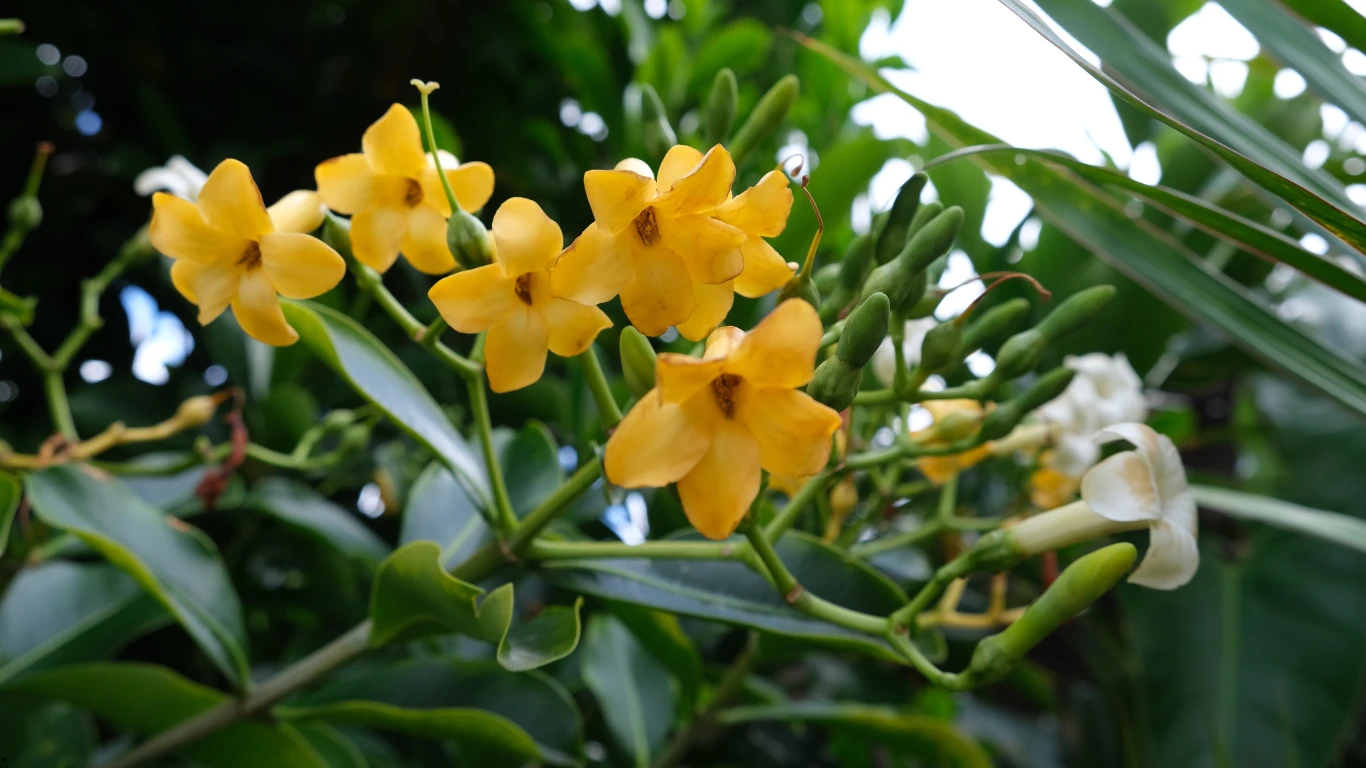
The Puakenikeni Flower Tree, also known as the Perfume Flower Tree (Fagraea berteroana), is a captivating addition to any tropical landscape. Renowned for its intoxicating fragrance and beautiful blooms, this flowering shrub or small tree has become synonymous with Hawaiian culture. But the Puakenikeni’s allure extends far beyond the islands, captivating gardeners and nature enthusiasts worldwide.
This post will be your guide to the Puakenikeni, delving into its characteristics, care requirements, and cultural significance. So, get ready to discover why the Puakenikeni deserves a special place in your garden.
Description of Scent
The Puakenikeni’s most celebrated feature is undoubtedly its intoxicating fragrance. Often described as “heavenly” and “sweetly intoxicating,” the Puakenikeni’s scent is a complex blend of jasmine, gardenia, and citrus. The fragrance is strongest in the early morning and evening, wafting through the air and captivating anyone within range.
The intensity of the fragrance is another unique aspect. Unlike some flowers whose scent fades quickly, the Puakenikeni’s perfume lingers for hours, creating a truly unforgettable olfactory experience. This characteristic has earned it the nickname “perfume flower tree.”
Symbolism and Placement Puakenikeni Flower Tree
In Hawaiian culture, the Puakenikeni Flower Tree holds deep significance. Its fragrant blooms are often woven into leis, symbolizing love, respect, and welcome. Traditionally, white Puakenikeni flowers were reserved for royalty and chiefs, while yellow and orange blooms were used for celebrations and everyday wear.
Beyond Hawaii, the Puakenikeni Flower Tree is a symbol of happiness, new beginnings, and prosperity. Its vibrant colors and intoxicating fragrance are believed to bring positive energy and good fortune.
Placement Tips
Due to its strong fragrance, planting your Puakenikeni strategically is key. Here are some tips:
- Near a Patio or Entrance: Imagine the welcoming aroma greeting guests as they enter your home. Plant your Puakenikeni near a patio, walkway, or entrance for a delightful sensory experience.
- Poolside Oasis: Create a tropical haven by planting your Puakenikeni Flower Tree near a pool. The sweet fragrance will enhance the ambiance and make poolside relaxation even more enjoyable.
- Fragrant Garden Companion: Combine your Puakenikeni with other fragrant plants like plumeria or night-blooming jasmine for a truly intoxicating sensory experience.
Things to Consider
- The Puakenikeni’s fragrance might be overwhelming for some people. Opt for a different location if you have fragrance-sensitive individuals in your household.
- The Puakenikeni attracts pollinators. If you have a vegetable garden nearby, planting the flower strategically can be beneficial for attracting bees and butterflies.
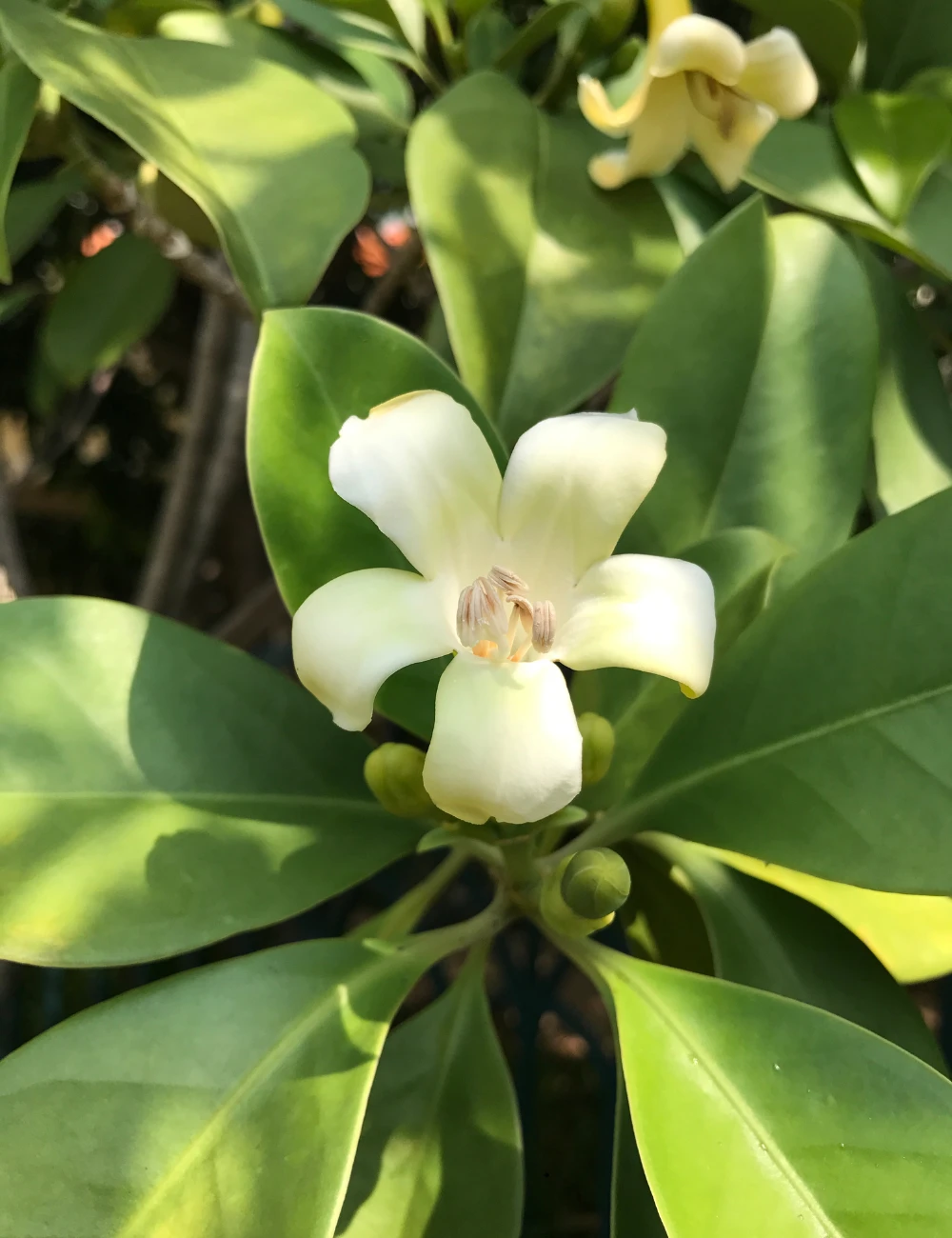
Puakenikeni Flower Tree
How to Grow and Care Puakenikeni Flower Tree
The Puakenikeni is a relatively easy-to-grow plant, making it ideal for beginner gardeners. Here’s a step-by-step guide to cultivate your own fragrant paradise:
Choosing the Right Spot
- Sunlight: Puakenikeni thrives in full sun but can tolerate partial shade, especially in hotter climates.
- Soil: Select well-draining, fertile soil with a slightly acidic to neutral pH. Amending your soil by organic matter or compost can improve drainage and provide essential nutrients.
- Climate: The Puakenikeni flourishes in warm, humid climates. It’s not frost-tolerant, so ensure consistent warm temperatures.
Planting:
- From Seed: Although possible, propagating Puakenikeni from seeds can be challenging. Seeds have germination with low rate and require specific conditions.
- From Cuttings: A more reliable method is propagation from stem cuttings. Take a healthy stem cutting from a mature plant, dip it in rooting hormone, and put it in a pot with a well-draining soil.
- From a Nursery: The easiest option is purchasing a young Puakenikeni from a reputable nursery.
Ongoing Care
- Watering: Water your Puakenikeni Flower Tree regularly, especially during its initial growth stage. However, avoid overwatering, becuas this can lead to root rot.
- Fertilizing: Apply a balanced fertilizer during the spring and summer to encourage healthy growth and abundant blooms.
Puakenikeni Flower Tree Pruning
While regular pruning isn’t essential for the Puakenikeni’s health, it offers several benefits:
- Shape and Size Control: Left unpruned, the Puakenikeni can grow into a small tree with an open, leggy appearance. Pruning allows you to maintain a desired size and shape, whether it’s a compact shrub or a small, spreading tree.
- Encouraging Bushier Growth: Pruning stimulates new growth on lower branches, resulting in a plant with more blooms. By removing spent flowers and congested growth, you encourage the plant to concentrate its power on generate fresh blooms and branches.
- Maintaining Picking Height: Puakenikeni flowers are prized for leis and other cultural uses. Pruning aids keep the plant at a manageable size for effortless flower harvesting.
Pruning Techniques
- Utilize strong, sterilized pruning shears to avoid hurting the plant.
- Create neat cuts at a 45-degree angle only beyond a bud or outward-facing leaf node.
- Start with light pruning, removing no more than 1/3 of the plant’s growth at a time. You can always prune more later if needed.
The ideal time to prune your Puakenikeni is after flowering has finished. This lets the plant to concentrate its power on new blossoming and flower bud growth for the following season.
Additional Care Tips:
- Deadheading: Regularly deadheading spent flowers not only improves the plant’s appearance but also encourages continued blooming.
- Mulching: Use a layer of mulch around the base of your Puakenikeni Flower Tree to keep moisture, stop weeds, and control soil temperature.
Uses of the Puakenikeni Flower Tree
Beyond its captivating fragrance and beauty, the Puakenikeni offers several practical uses:
- Leis: The Puakenikeni’s fragrant blooms are a treasured component of traditional Hawaiian leis. Their vibrant colors and intoxicating scent add a special touch to these cultural adornments.
- Landscaping: As a flowering shrub or small tree, the Puakenikeni Flower Tree makes a stunning addition to any tropical landscape. Its vibrant blooms and lush foliage can be used to create a focal point, border walkways, or add a touch of fragrance to a patio.
- Cut Flowers: The Puakenikeni’s long-lasting blooms make them ideal for cut flowers. Their fragrance and vibrant colors add a touch of the tropics to any indoor arrangement.
Pests and Diseases
The Puakenikeni Flower Tree is generally a resilient plant, but it can be susceptible to a few common pests and diseases:
Pests:
- Mealybugs: These soft-bodied insects suck sap from leaves and stems, causing stunted growth and sticky deposits.
- Scales: These small, armored insects attach themselves to plant stems and leaves, feeding on sap and weakening the plant.
- Aphids: These tiny, sap-sucking insects can cause leaves to curl and distort.
Management:
- Organic methods: For light infestations, try insecticidal soap, neem oil spray, or introducing natural predators like ladybugs or lacewings.
- Insecticides: If organic methods prove ineffective, consider using a horticultural insecticide specifically labeled for the target pest.
Diseases:
- Fungal Diseases: Overwatering can lead to fungal problems like root rot. Ensure proper drainage and avoid wetting the leaves.
- Leaf Spots: Fungal or bacterial leaf spots may appear on the leaves. Enhance air circulation and remove influenced leaves to control further spread.
Prevention:
- Proper Care: Following proper watering, fertilizing, and pruning practices will enhance your Puakenikeni’s overall health and resistance to pests and diseases.
- Monitoring: Regularly check your plant for symptoms of pests or diseases. Early intervention and detection are essential for practical management.
Insects or Birds Attracted to the Flower
The Puakenikeni’s sweet fragrance and nectar-rich flowers attract a variety of pollinators, creating a vibrant ecosystem in your garden. Here are some of the common visitors you might encounter:
- Bees: Honeybees and native Hawaiian bees, like the yellow-faced bee (ʻIoʻole), are frequent visitors, drawn to the readily available nectar. Their activity in transferring pollen between flowers is crucial for the Puakenikeni’s reproduction.
- Butterflies: The vibrant colors and sweet fragrance of the Puakenikeni flowers are irresistible to butterflies like the Monarch butterfly and the Kamehameha butterfly (ʻIolana). Their delicate wings flitting between blooms add a touch of magic to your garden.
- Hummingbirds: In some regions, hummingbirds might be attracted to the Puakenikeni’s nectar. Their long, slender beaks are perfectly adapted to reaching deep into the flower’s trumpet-shaped blooms.
The presence of these pollinators not only benefits the Puakenikeni but also plays a vital role in the general health of your garden ecosystem. The more pollinators you attract, the better the chances of a successful harvest for other flowering plants in your garden.
Conclusion: Cultivating a Fragrant Paradise
The Puakenikeni Flower Tree, with its captivating fragrance, vibrant blooms, and cultural significance, is a truly remarkable plant. Whether you’re drawn to its intoxicating scent, beautiful flowers, or symbolic meaning, the Puakenikeni is a valuable addition to any tropical landscape.
With its relatively easy care requirements, the Puakenikeni Flower Tree is a rewarding plant for gardeners of all levels. By pursuing the tips provided in this blog post, you can successfully cultivate your own fragrant heaven and enjoy the attractiveness and usefulness of the Puakenikeni for years to come.
So, why not embark on this fragrant journey and plant a Puakenikeni Flower Tree in your garden? You might just discover a new famous addition to your tropical oasis.
-
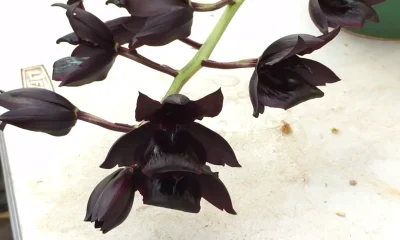
 Plants & Flowers5 months ago
Plants & Flowers5 months agoFascinating Facts About the Mysterious Black Orchid Flower
-
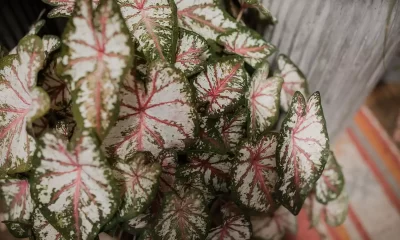
 Plants & Flowers5 months ago
Plants & Flowers5 months agoPink Pothos Unveiled: A Variegated Tapestry of Beauty, Wellness, and Cultural Symbolism
-
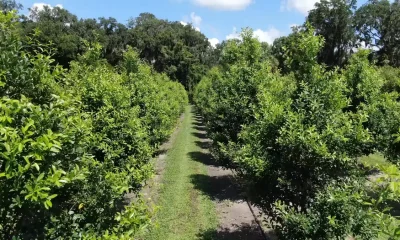
 Gardens3 months ago
Gardens3 months agoHow to Grow and Care for Eagleston Holly
-
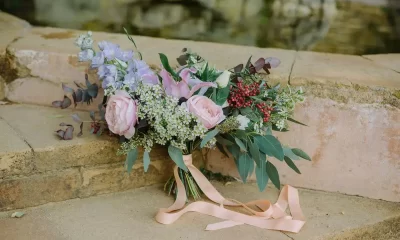
 Plants & Flowers5 months ago
Plants & Flowers5 months agoWild Flower Bouquet: Nature’s Kaleidoscope of Colors
-
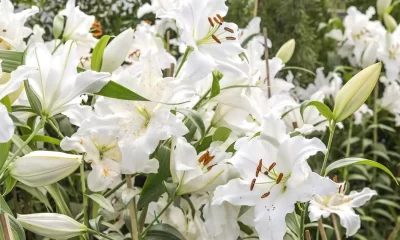
 Plants & Flowers5 months ago
Plants & Flowers5 months agoWhite Flower Plant Identification: A Guide to Nature’s Elegance
-
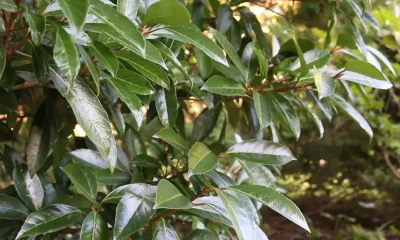
 Care Tips4 months ago
Care Tips4 months agoHow to Grow and Care for Chindo Viburnum
-
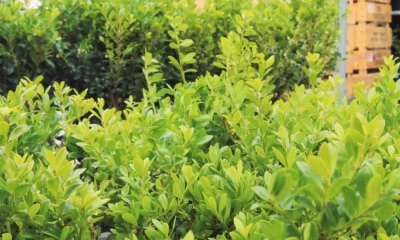
 Care Tips4 months ago
Care Tips4 months agoHow to Grow and Care for Hoogendorn Holly
-
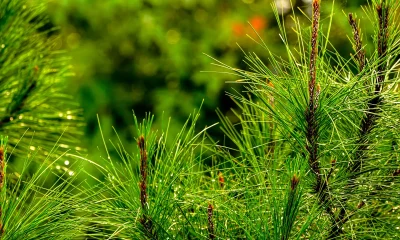
 Care Tips3 months ago
Care Tips3 months agoItalian Stone Pine Tree Care and Grow Guide (2024)



